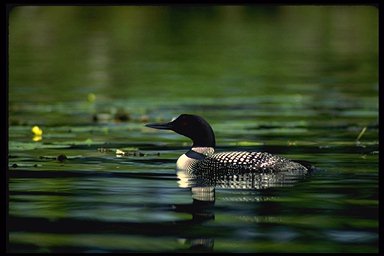
WHERE NORTH MEETS SOUTH
This is loon country, cottage country, famous for its dazzling autumn forests of
scarlet and gold and its innumerable lakes and waterways. Like the boreal shield
country to the north, this region is deeply ingrained into the image of Canada.

THE LAND:
Although this region has three separate sections, it is united by two distinctive characteristics: the mixed forest of coniferous and deciduous trees and the ancient bedrock of the southern edge of the Canadian Shield. The entire region is a transition zone, where species from the deciduous forests to the south intermingle with those of the boreal forests to the north and, to a lesser extent, those from the western plains, the Atlantic coast and the Arctic.
Each section is remarkably similar in appearance - knobbly wooded hills incised by rivers and streams and dotted with thousands of lakes. Rivers and streams run slowly, backed up by numerous beaver dams and rocky ledges. The effects of the Ice Age are everywhere written on the land. Extensive areas of exposed bedrock are common, much of it scoured and scraped smooth by the passing of the glaciers; in other areas, glacial till or deposits left by ancient meltwater rivers soften the relief.

VEGETATION:
The three sections making up this region are covered with a mosaic of coniferous and deciduous forest that are aflame with colour each fall. The region is one of continuous transition, with many species reaching their northern or southern range limits here. Along its northern border, species common to the boreal forest - white spruce, black spruce, white birch, jack pine, balsam fir - make up a high percentage of total forest cover. In the southern portion of the region, sugar maple, American beech, basswood, white elm, red maple and other species common to the pure deciduous forests predominate. Eastern hemlock, yellow birch, white pine and red pine are found throughout the region.
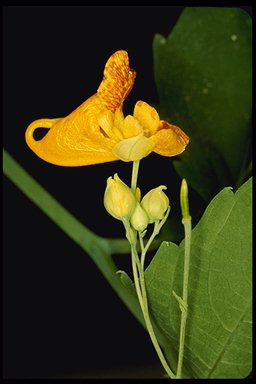
WILDLIFE:
This is also a region of transition for wildlife, with many species reaching their northern or southern range limits here. Wildlife typical of the boreal forest, such as moose, lynx, snowshoe hare and timber wolf are widespread, but reach their southern limits here. Chipmunk, mourning dove, cardinal and wood thrush are just a sampling of widespread species from southern forests that reach their northern limits here. Range limits change quickly in this region, reflecting the habitat alterations that are continuously occurring because of the effects of humans or natural fluctuations in climate, with some expanding northward and others spreading to the south. Many species have limited ranges or disjunct populations within this region - eastern hognose snake, black rat snake, eastern massasauga rattlesnake, eastern ribbon snake, southern flying squirrel, piping plover, the re-introduced wild turkey, and Blanding's turtle, among many others.
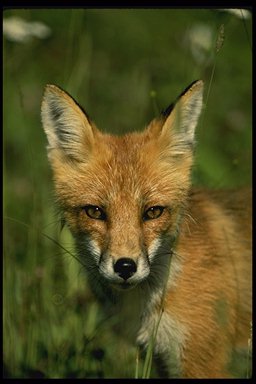
STATUS OF NATIONAL PARKS
Three national parks represent this region: St. Lawrence Islands (9 km2), La Mauricie (536 km2) and Georgian Bay Islands (26 km2). St. Lawrence Islands National Park, composed mainly of granite islands scattered for 80 kilometres along the St. Lawrence River, presents a remarkable diversity of flora and fauna, including many species considered rare, threatened or endangered such as the pitch pine and the black rat snake. Each island has its own particular mix of species, depending on its size, bedrock and recent history. A short walk across many islands can take you from a hardwood forest typical of areas much further south to moist shady slopes where northern species flourish.
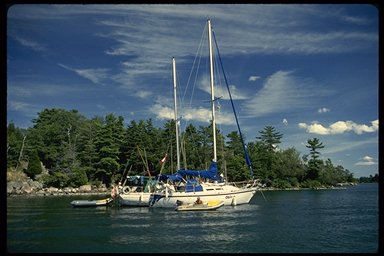
The islands that make up the park were formerly Indian lands, surrendered under treaty and held in trust by the Government of Canada. By the turn of the century, many had been sold for summer homes. In 1904, local residents urged the federal government to reserve for the public nine islands designated for sale. These formed the nucleus of the park, which was formally established in 1914.
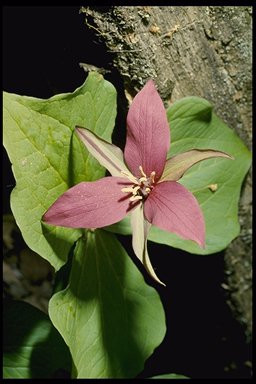
La Mauricie National Park is quintessential "Shield Country", a land of rich mixed-wood forests and over 150 lakes set into the gently rolling Laurentian Hills. Sport fishing for speckled and lake trout and canoe tripping along the routes that crisscross the park are the best ways to experience La Mauricie's Laurentian heritage. The park was established in 1970 pursuant to a federal-provincial agreement with the Government of Quebec.

Georgian Bay Islands National Park consists of 59 islands and shoals on the east side of Georgian Bay. The park is a transition between natural regions 29 and 19. This interface results in a merging of many habitats, giving the park a great diversity of flora and fauna and many rare species. More species of reptiles and amphibians, including the eastern Massasauga rattlesnake, are found here than in any other national park.
The islands making up the park were formerly Indian lands surrendered by the Chippewa in 1856 and held in trust by the Department of Indian Affairs. By the turn of the century, the Georgian Bay region had become a popular vacation area with waterfront lands quickly being bought up. With commendable foresight, the Commissioner of National Parks, J.B. Harkin, recommended the purchase of 28 islands from the Department of Indian Affairs in 1924. The park was formally scheduled in 1929.